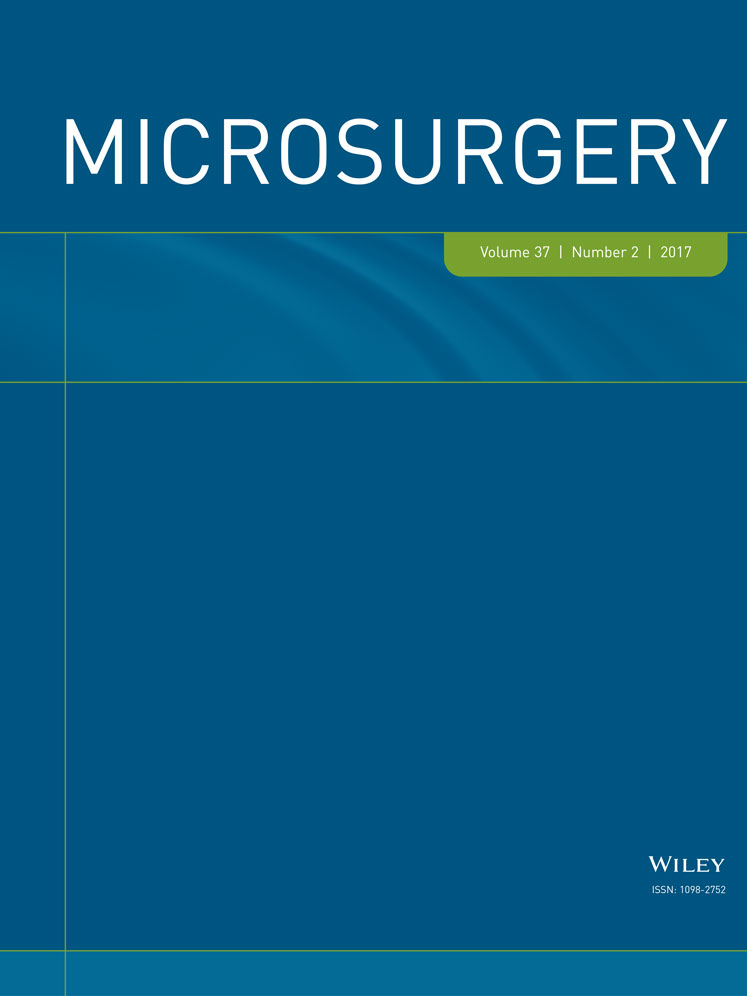Refinements in flap design and inset for pharyngoesophageal reconstruction with free thigh flaps
Grants/Financial disclosure statement: None of the authors has a financial interest in any of the products, devices, or drugs mentioned in this manuscript.
Abstract
Background
Complications arising from anastomotic failure may occur after pharyngoesophageal reconstruction. In this report we present results of pharyngoesophageal reconstruction with free thigh flaps using a refined design and inset strategy in a series of patients.
Methods
From May 2011 to December 2012, pharyngoesophageal oncologic defects were reconstructed in 12 men using thigh flaps. Flaps were designed to exceed defect circumference to allow draping of the excess over injury-prone vessels (so-called delta-inset). Patients were 39- to 68-years-old (mean, 51.8-years-old) at the time of surgery. BMI ranged from 17 to 28 kg/m2 (average, 21.5 kg/m2). The sites of defects were the hypopharynx in 11 cases and the pharynx in 1 case. Ten anterolateral thigh (ALT) flaps and 2 anteromedial thigh (AMT) flaps were used. All patients underwent radiation therapy.
Results
The average flap size was 22 × 9 cm (range: 16–26 × 7–11 cm2). There were no partial or total flap losses, and no donor site complications. Follow-up was 19.3 months (range: 2.4–21.6 months) including 8 patients (75%) who succumbed to disease in the follow-up period. Oral intake was achieved in all patients. Recipient site complications occurred in 50% of cases and included fistula (2 cases), fistula and stricture (2 cases), stricture (1 case), and lymphocele (1 case). Four patients required revision for fistula.
Conclusions
A refined thigh flap design and inset method in pharyngoesophageal reconstruction may circumvent complications arising from toxic drainage and vascular injury. However, there are insufficient data to make meaningful comparisons to alternative methods. © 2015 Wiley Periodicals, Inc. Microsurgery 37:112–118, 2017.




